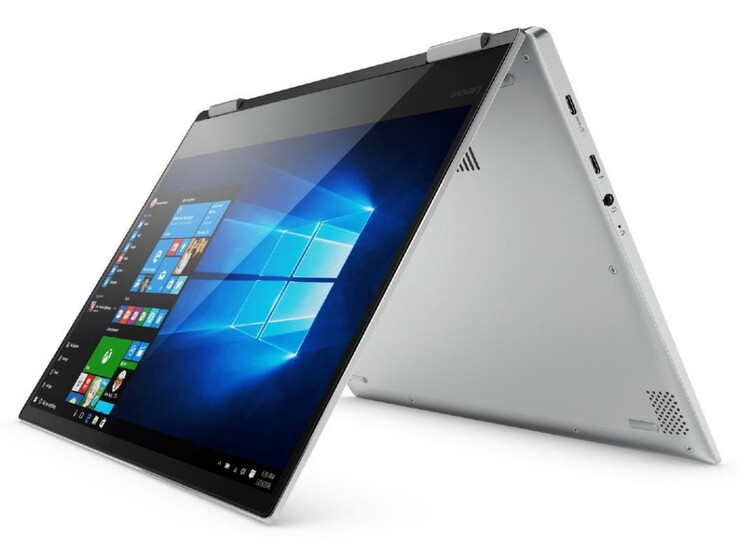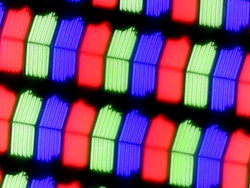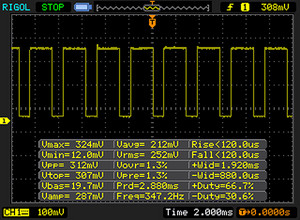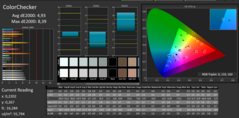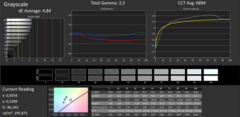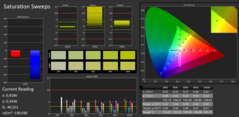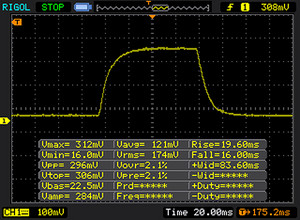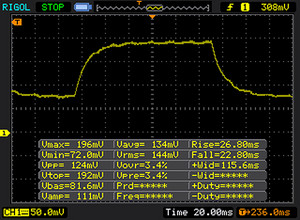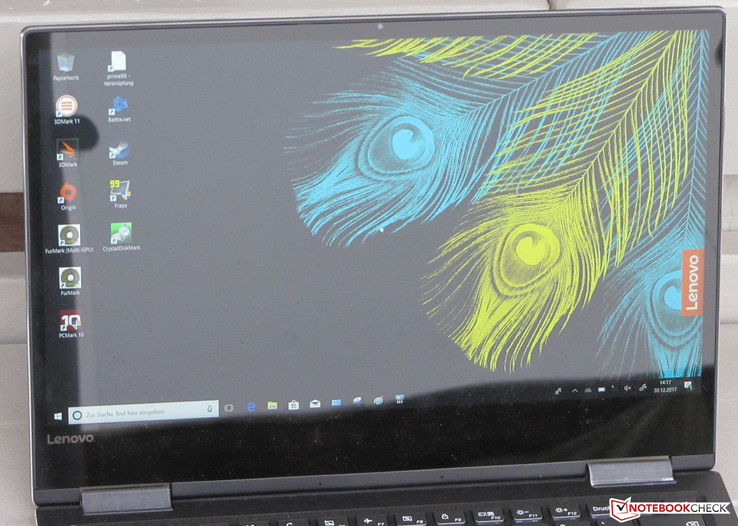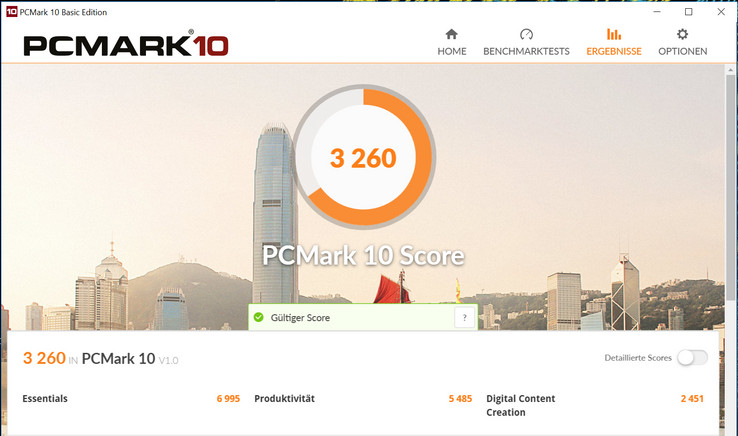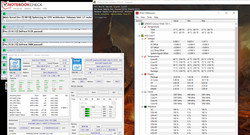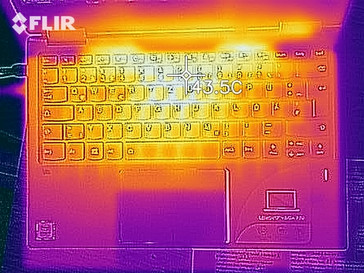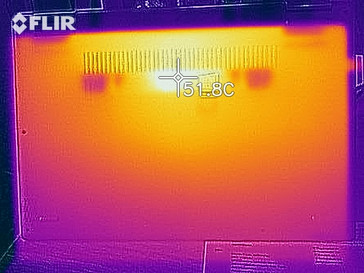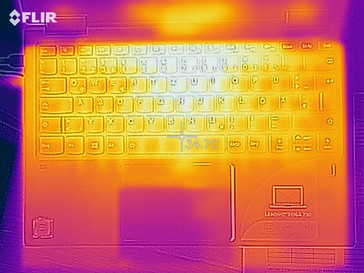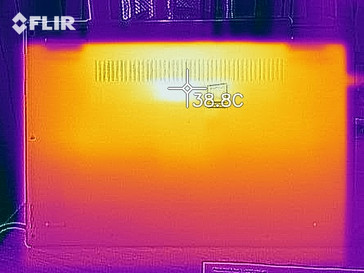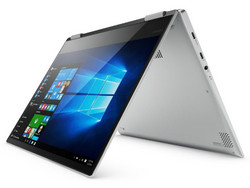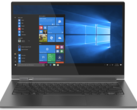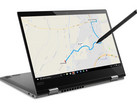Lenovo Yoga 720-13IKB (i7-8550U, SSD, FHD) Convertible Review

The Lenovo Yoga 720-13IKB is no stranger to us - we have already reviewed a laptop from this series a few months ago. What differentiates the current model from its sibling model is the CPU: This model uses a quad-core processor. The competitors of the device include: the Acer Spin 5 SP513-52N, the Asus ZenBook Flip S UX370 and the HP Spectre x360 13.
Because both models are identically built, we shall skip the sections that deal with the case, connectivity, input devices and the speakers. You can find all the relevant information in the review of the sibling model.
Connectivity
| Networking | |
| iperf3 transmit AX12 | |
| Lenovo Yoga 720-13IKB | |
| Asus ZenBook Flip S UX370 | |
| Lenovo Yoga 720-13IKB | |
| Acer Spin 5 SP513-52N-54SF | |
| iperf3 receive AX12 | |
| Lenovo Yoga 720-13IKB | |
| Asus ZenBook Flip S UX370 | |
| Lenovo Yoga 720-13IKB | |
| Acer Spin 5 SP513-52N-54SF | |
Display
The 13.3-inch touch-enabled display of the Yoga has a native resolution of 1920x1080. The brightness (277.4 cd/m2) and contrast ratio (900:1) are more or less acceptable. However, devices with a similar price tag offer values that are well above 300 cd/m2and 1000:1.
Unfortunately, at 90% brightness and below, the screen exhibits PWM flickering with a frequency of 350 Hz. Therefore, susceptible individuals may experience headaches and eyestrain.
| |||||||||||||||||||||||||
Brightness Distribution: 87 %
Center on Battery: 300 cd/m²
Contrast: 900:1 (Black: 0.33 cd/m²)
ΔE Color 4.93 | 0.5-29.43 Ø5
ΔE Greyscale 4.84 | 0.57-98 Ø5.3
88% sRGB (Argyll 1.6.3 3D)
58% AdobeRGB 1998 (Argyll 1.6.3 3D)
64.4% AdobeRGB 1998 (Argyll 2.2.0 3D)
88.2% sRGB (Argyll 2.2.0 3D)
67.8% Display P3 (Argyll 2.2.0 3D)
Gamma: 2.5
| Lenovo Yoga 720-13IKB IPS, 1920x1080, 13.30 | Lenovo Yoga 720-13IKB IPS, 1920x1080, 13.30 | Acer Spin 5 SP513-52N-54SF IPS, 1920x1080, 13.30 | Asus ZenBook Flip S UX370 a-Si TFT-LCD, WLED, 1920x1080, 13.30 | HP Spectre x360 13-4104ng IPS, 2560x1440, 13.30 | |
|---|---|---|---|---|---|
| Display | -5% | 6% | -1% | 3% | |
| Display P3 Coverage | 67.8 | 65.3 -4% | 69.8 3% | 64 -6% | 66.8 -1% |
| sRGB Coverage | 88.2 | 83.7 -5% | 94.6 7% | 90 2% | 92.8 5% |
| AdobeRGB 1998 Coverage | 64.4 | 61.2 -5% | 69.3 8% | 64.9 1% | 67.3 5% |
| Response Times | 30% | 69% | 13% | 48% | |
| Response Time Grey 50% / Grey 80% * | 48 ? | 32 ? 33% | 49 ? -2% | 44 ? 8% | 24 ? 50% |
| Response Time Black / White * | 35 ? | 26 ? 26% | 27 ? 23% | 29 ? 17% | 19 ? 46% |
| PWM Frequency | 350 ? | 1000 ? 186% | |||
| Screen | -1% | 16% | 16% | 6% | |
| Brightness middle | 297 | 351 18% | 295 -1% | 334 12% | 324 9% |
| Brightness | 277 | 310 12% | 276 0% | 321 16% | 324 17% |
| Brightness Distribution | 87 | 82 -6% | 88 1% | 86 -1% | 90 3% |
| Black Level * | 0.33 | 0.37 -12% | 0.27 18% | 0.25 24% | 0.34 -3% |
| Contrast | 900 | 949 5% | 1093 21% | 1336 48% | 953 6% |
| Colorchecker dE 2000 * | 4.93 | 5.03 -2% | 2.97 40% | 4.24 14% | 4.36 12% |
| Colorchecker dE 2000 max. * | 8.39 | 12 -43% | 5.67 32% | 6.03 28% | |
| Greyscale dE 2000 * | 4.84 | 3.62 25% | 3.12 36% | 3.92 19% | 4.62 5% |
| Gamma | 2.5 88% | 2.18 101% | 2.45 90% | 2.68 82% | 2.18 101% |
| CCT | 6894 94% | 6323 103% | 6676 97% | 6758 96% | 6857 95% |
| Color Space (Percent of AdobeRGB 1998) | 58 | 55 -5% | 62 7% | 58 0% | 60 3% |
| Color Space (Percent of sRGB) | 88 | 84 -5% | 94 7% | 90 2% | 93 6% |
| Total Average (Program / Settings) | 8% /
2% | 30% /
24% | 9% /
12% | 19% /
12% |
* ... smaller is better
Screen Flickering / PWM (Pulse-Width Modulation)
| Screen flickering / PWM detected | 350 Hz | ≤ 90 % brightness setting | |
The display backlight flickers at 350 Hz (worst case, e.g., utilizing PWM) Flickering detected at a brightness setting of 90 % and below. There should be no flickering or PWM above this brightness setting. The frequency of 350 Hz is relatively high, so most users sensitive to PWM should not notice any flickering. However, there are reports that some users are still sensitive to PWM at 500 Hz and above, so be aware. In comparison: 53 % of all tested devices do not use PWM to dim the display. If PWM was detected, an average of 17915 (minimum: 5 - maximum: 3846000) Hz was measured. | |||
Display Response Times
| ↔ Response Time Black to White | ||
|---|---|---|
| 35 ms ... rise ↗ and fall ↘ combined | ↗ 19 ms rise | |
| ↘ 16 ms fall | ||
| The screen shows slow response rates in our tests and will be unsatisfactory for gamers. In comparison, all tested devices range from 0.1 (minimum) to 240 (maximum) ms. » 92 % of all devices are better. This means that the measured response time is worse than the average of all tested devices (21.5 ms). | ||
| ↔ Response Time 50% Grey to 80% Grey | ||
| 48 ms ... rise ↗ and fall ↘ combined | ↗ 26 ms rise | |
| ↘ 22 ms fall | ||
| The screen shows slow response rates in our tests and will be unsatisfactory for gamers. In comparison, all tested devices range from 0.2 (minimum) to 636 (maximum) ms. » 80 % of all devices are better. This means that the measured response time is worse than the average of all tested devices (33.7 ms). | ||
Lenovo has equipped the Yoga with an IPS panel with very stable viewing angles. Therefore, the screen content is legible from every position. Under the open sky, the device can only be used when the sun does not shine too brightly, and even then the reflective surface of the display can negatively impact the experience.
Performance
With the Yoga 720-13IKB, Lenovo delivers a 13.3-inch convertible, which offers more than enough performance for such usage scenarios as office work and Internet browsing. Our review device can be had for 1350 (~$1630) to 1400 Euros (~$1690). The prices start at 940 Euros ($1130).
Review Conditions
The BIOS of the laptop allows the users to tune the temperature and fan management of the Yoga slightly. There are two options available: “Performance” (= maximum performance) and “Quiet” (= maximum quietness). We have conducted all of our benchmarks in “Performance” mode.
Subsequently, we tried out the “Quiet” mode. We could not determine any difference between the two modes. The results of the CPU benchmarks as well as the fan behavior were basically the same.
Processor
Lenovo has put a quad-core Intel Core i7-8550U (Kaby Lake) CPU inside the Yoga. This ULV model (TDP: 15 watts) runs with a base clock of 1.8 GHz, which can be boosted up to 4 GHz.
In the “Cinebench” benchmarks, the CPU can run at its maximum clock speeds (Single-core: 3.7 to 4 GHz, Multi-core: 2.8 to 2.9 GHz) for only a very short time. After a few seconds, the CPU is throttled down to 1.8 GHz. Things look the same with the “Geekbench 4” benchmarks. However, in these benchmarks, the boost clock of 3.7 to 4 GHz was maintained for a little longer. In the “Geekbench 3” benchmark, the CPU operates almost constantly at 1.8 GHz. This behavior is identical when the laptop is plugged in and when it is running off of battery power.
We check if the Turbo boost can be used over an extended period of time by running the Cinebench R15 Multi-Core benchmark in a continuous loop for 30 minutes. After the first benchmark run, the results drop to 390 points and stay consistently at that level. The Turbo boost is not utilized at all, and the CPU operates at frequencies which are well below its own base clock.
Because the CPU cannot utilize its Turbo boost the results of the CPU benchmarks are significantly below those of the other 8550U-based notebooks. As a matter of fact, the results in the Single-core benchmarks lie below those of the previously-reviewed dual-core sibling model. It has an advantage only in the Multi-core benchmarks, which can be attributed to the two additional cores.
| Cinebench R10 | |
| Rendering Single 32Bit | |
| Acer Spin 5 SP513-52N-54SF | |
| Asus ZenBook Flip S UX370 | |
| Lenovo Yoga 720-13IKB | |
| HP Spectre x360 13-4104ng | |
| Lenovo Yoga 720-13IKB | |
| Rendering Multiple CPUs 32Bit | |
| Acer Spin 5 SP513-52N-54SF | |
| Lenovo Yoga 720-13IKB | |
| Asus ZenBook Flip S UX370 | |
| HP Spectre x360 13-4104ng | |
| Lenovo Yoga 720-13IKB | |
| Geekbench 3 | |
| 32 Bit Multi-Core Score | |
| Acer Spin 5 SP513-52N-54SF | |
| Lenovo Yoga 720-13IKB | |
| HP Spectre x360 13-4104ng | |
| 32 Bit Single-Core Score | |
| Acer Spin 5 SP513-52N-54SF | |
| HP Spectre x360 13-4104ng | |
| Lenovo Yoga 720-13IKB | |
| Geekbench 4.0 | |
| 64 Bit Multi-Core Score | |
| Acer Spin 5 SP513-52N-54SF | |
| Lenovo Yoga 720-13IKB | |
| 64 Bit Single-Core Score | |
| Lenovo Yoga 720-13IKB | |
| Acer Spin 5 SP513-52N-54SF | |
| Geekbench 4.4 | |
| 64 Bit Multi-Core Score | |
| Acer Spin 5 SP513-52N-54SF | |
| Lenovo Yoga 720-13IKB | |
| 64 Bit Single-Core Score | |
| Lenovo Yoga 720-13IKB | |
| Acer Spin 5 SP513-52N-54SF | |
| JetStream 1.1 - Total Score | |
| Acer Spin 5 SP513-52N-54SF (Edge 41) | |
| Lenovo Yoga 720-13IKB (EDGE: 38.14393.1066.0) | |
| Asus ZenBook Flip S UX370 (Edge 40.15063.0.0) | |
| Lenovo Yoga 720-13IKB (Edge 41) | |
System Performance
The system runs smoothly. We did not encounter any problems. Even though, the CPU benchmarks show that the processor can only operate at its boost clock for a few seconds, the results that the Yoga achieves in the PCMark benchmarks are on the same level as those of other devices that are based on the same CPU platform. In other words: The fact that the Turbo boost can only be used for a very short time does not seem to have much of a negative impact on day-to-day usage. However, this will not be the case when the CPU needs to do a lot of demanding calculations over an extended period of time. An increase in overall performance is not possible. Lenovo has already exhausted all the possibilities.
| PCMark 8 Home Score Accelerated v2 | 3815 points | |
| PCMark 8 Creative Score Accelerated v2 | 4748 points | |
| PCMark 8 Work Score Accelerated v2 | 4685 points | |
| PCMark 10 Score | 3260 points | |
Help | ||
| PCMark 8 - Home Score Accelerated v2 | |
| Lenovo Yoga 720-13IKB | |
| Lenovo Yoga 720-13IKB | |
| Asus ZenBook Flip S UX370 | |
| Acer Spin 5 SP513-52N-54SF | |
Storage Devices
An NVMe SSD (M.2-2280) from Toshiba serves as the system drive. It has a total capacity of 512 GB. NVMe SSDs achieve faster transfer rates than SATA-III models, because they are connected via PCI Express 3.0 x4. Therefore, the included SSD delivers very good transfer rates.
| Lenovo Yoga 720-13IKB Toshiba XG4 NVMe (THNSN5512GPUK) | Lenovo Yoga 720-13IKB Samsung PM961 MZVLW256HEHP | Acer Spin 5 SP513-52N-54SF Micron 1100 MTFDDAV256TBN | Asus ZenBook Flip S UX370 SanDisk SD8SN8U256G1002 | |
|---|---|---|---|---|
| CrystalDiskMark 3.0 | 43% | -38% | -43% | |
| Read Seq | 1345 | 2172 61% | 462.7 -66% | 455.9 -66% |
| Write Seq | 569 | 1222 115% | 439.9 -23% | 432.5 -24% |
| Read 512 | 1041 | 1295 24% | 325.2 -69% | 315.7 -70% |
| Write 512 | 547 | 863 58% | 361.9 -34% | 291.5 -47% |
| Read 4k | 38.42 | 59.5 55% | 27.52 -28% | 29.7 -23% |
| Write 4k | 127.1 | 150.3 18% | 91.6 -28% | 57 -55% |
| Read 4k QD32 | 416.4 | 426.4 2% | 247.3 -41% | 385.4 -7% |
| Write 4k QD32 | 337.5 | 360 7% | 292 -13% | 170.8 -49% |
Graphics Card
The Intel UHD Graphics 620 is responsible for image rendering. It supports DirectX 12 and has a maximum core clock of 1150 MHz. The results in the 3DMark benchmarks are on the normal level for this kind of GPU. It benefits from the dual-channel-enabled RAM. Because the RAM runs in dual-channel mode the graphics unit can be better utilized, hence a boost in performance.
| 3DMark 11 Performance | 1935 points | |
| 3DMark Cloud Gate Standard Score | 7139 points | |
| 3DMark Fire Strike Score | 1029 points | |
Help | ||
| 3DMark 11 - 1280x720 Performance GPU | |
| Lenovo Yoga 720-13IKB | |
| Acer Spin 5 SP513-52N-54SF | |
| Asus ZenBook Flip S UX370 | |
| Lenovo Yoga 720-13IKB | |
| HP Spectre x360 13-4104ng | |
| HP Spectre x360 13-4104ng | |
Gaming Performance
The GPU-CPU combination of the notebook can run some games smoothly. This applies to the titles that have low system requirements. However, one will have to be content with running these games at low resolutions and with low graphical settings. Thanks to the dual-channel-enabled RAM, the frame rates of the Yoga are higher than those of comparable devices whose RAM runs in single-channel mode.
| low | med. | high | ultra | |
| StarCraft 2 (2010) | 188.2 | 60.1 | 33.8 | 18.4 |
| BioShock Infinite (2013) | 59.9 | 31.4 | 25.9 | 8.4 |
| Risen 3: Titan Lords (2014) | 39.8 | 24.1 | 7.6 | |
| Middle-earth: Shadow of Mordor (2014) | 37.7 | 22.6 | 11.3 | |
| Alien: Isolation (2014) | 51.5 | 35.6 | 17 | |
| Dragon Age: Inquisition (2014) | 26.3 | 21.9 | ||
| Mirror's Edge Catalyst (2016) | 22.3 | 15.2 |
Energy & Emissions
System Noise
The convertible does not get very noisy under all sorts of loads. As a rule, the fan stands still at idle and under light loads. However, even very light loads can cause the fan to start spinning. Under heavy load, the fan does not spin particularly hard. During our stress test (in which we run Prime95 and FurMark for at least one straight hour), we measured a sound pressure level of 34.7 dB(A). When only Prime95 is running, the noise level increases up to 36 dB(A). Under load, the fan of our review device operates somewhat quieter than the fan of the previously-reviewed sibling model. Nevertheless, more than a few users will find the fan noise annoying, especially when they are trying to concentrate on their work
Lenovo appears to have provided a few options for fan control. Presumably, this may also apply to the sibling model, when one installs the latest version of the BIOS. Our review device comes equipped with the BIOS version 1YCN35WW (V2.02). At the time of this review, the BIOS version 1YCN37WW (V2.04) is available on Lenovo’s website for both models.
Noise Level
| Idle |
| 30.5 / 30.5 / 30.5 dB(A) |
| Load |
| 32.8 / 34.7 dB(A) |
 | ||
30 dB silent 40 dB(A) audible 50 dB(A) loud |
||
min: | ||
Temperature
In our stress test (Prime95 and FurMark running for at least one hour), the Yoga performs similarly both when it is plugged in and when it is running on battery power: The processor begins the test with a clock speed of 1.8 GHz. After a few minutes, it is throttled down to 1 to 1.1 GHz and operates consistently at this level. The graphics unit runs at 650 to 700 MHz. The convertible does not get excessively hot. During the stress test, the 40-degree Celsius (104 °F) mark is exceeded only at one measurement point.
(+) The maximum temperature on the upper side is 39.2 °C / 103 F, compared to the average of 35.3 °C / 96 F, ranging from 19.6 to 55.7 °C for the class Convertible.
(±) The bottom heats up to a maximum of 40.6 °C / 105 F, compared to the average of 36.8 °C / 98 F
(+) In idle usage, the average temperature for the upper side is 27.4 °C / 81 F, compared to the device average of 30.2 °C / 86 F.
(+) The palmrests and touchpad are cooler than skin temperature with a maximum of 27.2 °C / 81 F and are therefore cool to the touch.
(±) The average temperature of the palmrest area of similar devices was 28.1 °C / 82.6 F (+0.9 °C / 1.6 F).
Lautsprecher
Lenovo Yoga 720-13IKB audio analysis
(-) | not very loud speakers (69.3 dB)
Bass 100 - 315 Hz
(-) | nearly no bass - on average 20.6% lower than median
(±) | linearity of bass is average (11.9% delta to prev. frequency)
Mids 400 - 2000 Hz
(+) | balanced mids - only 3.3% away from median
(±) | linearity of mids is average (7.2% delta to prev. frequency)
Highs 2 - 16 kHz
(+) | balanced highs - only 1.6% away from median
(+) | highs are linear (4.3% delta to prev. frequency)
Overall 100 - 16.000 Hz
(±) | linearity of overall sound is average (20.2% difference to median)
Compared to same class
» 47% of all tested devices in this class were better, 7% similar, 46% worse
» The best had a delta of 6%, average was 21%, worst was 57%
Compared to all devices tested
» 47% of all tested devices were better, 9% similar, 45% worse
» The best had a delta of 4%, average was 25%, worst was 134%
Apple MacBook 12 (Early 2016) 1.1 GHz audio analysis
(+) | speakers can play relatively loud (83.6 dB)
Bass 100 - 315 Hz
(±) | reduced bass - on average 11.3% lower than median
(±) | linearity of bass is average (14.2% delta to prev. frequency)
Mids 400 - 2000 Hz
(+) | balanced mids - only 2.4% away from median
(+) | mids are linear (5.5% delta to prev. frequency)
Highs 2 - 16 kHz
(+) | balanced highs - only 2% away from median
(+) | highs are linear (4.5% delta to prev. frequency)
Overall 100 - 16.000 Hz
(+) | overall sound is linear (10.2% difference to median)
Compared to same class
» 5% of all tested devices in this class were better, 2% similar, 93% worse
» The best had a delta of 5%, average was 19%, worst was 53%
Compared to all devices tested
» 3% of all tested devices were better, 1% similar, 96% worse
» The best had a delta of 4%, average was 25%, worst was 134%
Frequency diagram in comparison (checkboxes can be checked and unchecked!)
Energy Consumption
There are no abnormalities in terms of energy consumption. While idling, we measured a maximum power draw of 9.7 watts. During the stress test (Prime95 and FurMark running for at least one hour), the power consumption rises only to 33 watts, because the CPU cannot utilize its Turbo boost. After a few minutes, the throttling of the CPU leads to a decrease in energy consumption. The nominal power draw of the AC adapter is 45 watts.
| Off / Standby | |
| Idle | |
| Load |
|
Battery Life
Our practically-oriented Wi-Fi test simulates loads which are consistent with surfing the web. The “balanced” profile is selected, the display brightness is set to 150 cd/m² and the energy saving functions are switched off. The Yoga achieves a battery runtime of 7 hours and 45 minutes. Therefore, it performs worse than its sibling model (8h:25m). The reason for this: The battery of our review device shows a wear level of 6%
| Battery Runtime - WiFi Websurfing | |
| Lenovo Yoga 720-13IKB | |
| HP Spectre x360 13-4104ng | |
| Acer Spin 5 SP513-52N-54SF | |
| Asus ZenBook Flip S UX370 | |
| Lenovo Yoga 720-13IKB | |
Pros
Cons
Verdict
The ULV CPU represents the only innovation over the previously-reviewed sibling model. Even though the CPU can only make use of its Turbo boost for a very short period of time, this does not seem to have much of a negative impact on everyday usability. Albeit, a dual-core CPU is quite sufficient for day-to-day use. Therefore, it does not make much sense for potential buyers to get a Yoga 720 model with a quad-core CPU.
Such a model would only be worth it if you are going to use software that is optimized for multi-core CPUs. Even when the CPU operates with its base clock, it is still faster than its dual-core sibling. However, those who need the full performance of the CPU on a permanent basis will have to get a different device.
With the Yoga 720-13IKB, Lenovo delivers a chic notebook which is very good for typing and Internet-surfing, but which, nevertheless, has weaknesses.
The convertible does not get very hot and works quietly most of the time. A fast NVMe SSD creates a very responsive system. The great battery life and a keyboard, which has a backlight and is very good for long typing sessions, round off the package.
The IPS Full HD screen is nothing to write home about. Although, the brightness and the contrast ratio are quite acceptable, we would expect more from a device with such a price tag. The display of a 1400-Euro (~$1690) laptop should not suffer from PWM flickering.
Lenovo Yoga 720-13IKB
-
01/02/2018 v6(old)
Sascha Mölck


 Deutsch
Deutsch English
English Español
Español Français
Français Italiano
Italiano Nederlands
Nederlands Polski
Polski Português
Português Русский
Русский Türkçe
Türkçe Svenska
Svenska Chinese
Chinese Magyar
Magyar